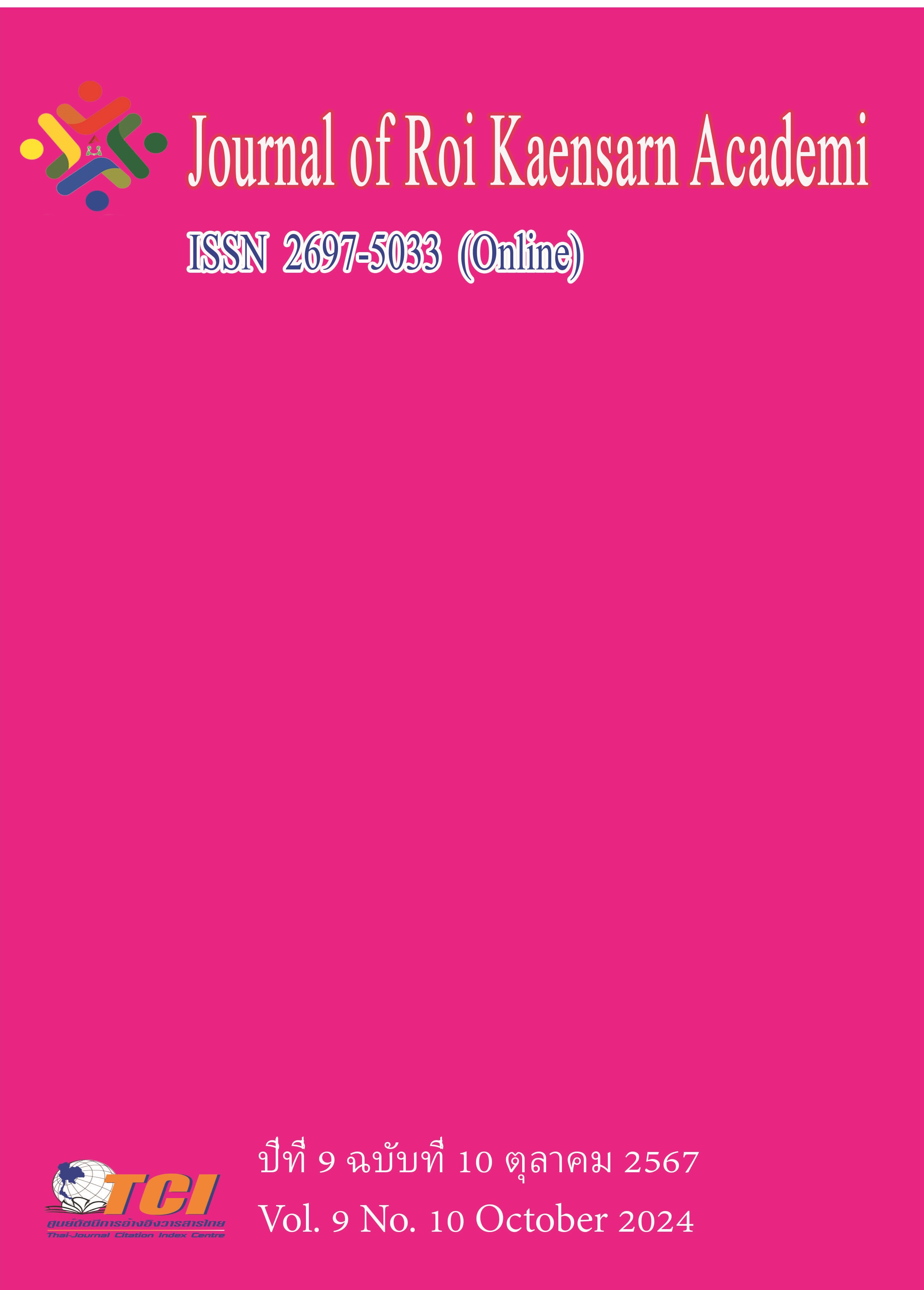The Case Method: An Effective Approach to Enhancing Critical Thinking
Main Article Content
บทคัดย่อ
This systematic review explores how the case method enhances critical thinking among university students. The study's objectives are to: 1) define the concept and application of the case method, including key steps such as case preparation, presentation, discussion, reflection, and assessment, and their role in fostering critical thinking; 2) evaluate the effectiveness of the case method in enhancing students' critical thinking skills, particularly in analysis, evaluation, Interpretation, Inference, explanation through real-world applications; 3) compare the case method with traditional teaching methods, focusing on its impact on student learning experiences and academic performance; 4) identify the benefits and challenges of implementing the case method in different cultural contexts, with particular attention to its application in exam-oriented education systems like China’s. A qualitative research design was employed, using a systematic literature review and content analysis of studies published over the last two decades. Data were drawn from academic journals, peer-reviewed articles, books, institutional reports, conference proceedings, and dissertations, with sources selected from databases like Web of Science, Elsevier ScienceDirect, and Springer Link. Relevant studies were identified through the purposive sampling of English and Chinese publications, with keywords systematically used to extract themes on instructional effectiveness, student engagement, and educational outcomes.
The findings demonstrate that the case method significantly enhances critical thinking by engaging students in real-world problem-solving, encouraging them to think from multiple perspectives and apply theoretical knowledge. Additionally, the case method improves the overall learning experience, fostering deeper engagement, teamwork, and self-directed learning. However, cultural and educational traditions, particularly in China, challenge its implementation. Based on the study’s findings, integrating case analysis into curricula aligned with course objectives, incorporating student feedback to refine teaching methods, and providing teacher training can enhance the effectiveness of the case method. Although the case method is a powerful tool for fostering critical thinking, its success relies on cultural adaptation and institutional support.
Article Details
References
Abrami, P. C., Bernard, R. M., Borokhovski, E., Waddington, D. I., Wade, C. A., & Persson, T. (2015). Strategies for Teaching Students to Think Critically. Review of Educational Research, 85(2), 275-314. https://doi.org/10.3102/0034654314551063
Alsaleh, N. J. (2020). Teaching Critical Thinking Skills: Literature Review. The Turkish Online Journal of Educational Technology 19(1), 24.
Associates, H. R. (2013). It Takes More Than a Major: Employer Priorities for College Learning and Student Success (Liberal Education, Issue.
Bloom, B. S. (1956). Taxonomy of Educational Objectives-The Classification of Educational Goals. David McKay Company, Inc.
Butler, H. A. (2012). Halpern Critical Thinking Assessment Predicts Real-World Outcomes of Critical Thinking. Applied Cognitive Psychology, 26(5), 721-729. https://doi.org/10.1002/acp.2851
Butterworth, T. (2005). Critical Thinking and Problem Solving Cambridge University Press.
Charan, R. (1976). Classroom Techniques in Teaching by the Case Method The Academy of Management Review, 1(3), 116-123.
Christensen, C. R., Garvin, D. A., & Sweet, A. B. (1991). Education for judgment: The artistry of discussion leadership. Harvard Business School Press.
Cossom, J. (1991). Teaching from Cases :Education for Critical Thinking. Journal of Teaching in Social Work, 5(1), 139-155.
Davidson, B., & Dunham, R. L. . (1997). Assessing EFL student progress in critical thinking with the Ennis-Weir Critical Thinking Essay Test. JALT Journal, 19(1), 43-57.
Duron, R., Limbach, B., & Waugh, W. (2006). Critical Thinking Framework For Any Discipline. International Journal of Teaching and Learning in Higher Education, 17(2).
Ellet, W. (2007). The case study handbook: How to read, discuss, and write persuasively about cases. Harvard Business School Press Boston, Massachusetts.
Ennis, R. H. (1993). Critical thinking assessment. Theory Into Practice, 32(3), 179-186. https://doi.org/10.1080/00405849309543594
Facione, P. A. (1990). Critical Thinking A Statement of Expert Consensus for Purposes of Educational Assessment and Instruction. American Philosophical Association.
Garrison, D. R., Anderson, T., & Archer, W. (2000). Critical inquiry in a text-based environment. The Internet and Higher Education, 2((2-3)), 87-105.
Gokhale, A. A. (1995). Collaborative Learning Enhances Critical Thinking. Journal of Technology Education, 7(1), 22-30.
Golich, V. L. (2000). The ABCs of Case Teaching. International Studies Perspectives 1, 11-29.
Halpern, D. F. (2014). Thought And Knowledge An Introduction To Critical Thinking Fifth Edition. Psychology Press.
Hammond, J. S. (2002). Learning by the case method. Boston,MA:Harvard Business School.
Harling, K. F., & Akridge, J. (1998). Using the Case Method of Teaching. Agribusiness, 14(1), 1-14.
Herreid, C. F. (2005). Using Case Studies to Teach Science.
Herreid, C. F. (2007). Start with a story: The Case Study Method of Teaching College Science. NSTA Press,Arlington, Virginia.
Huba, M. E., & Freed, J. E. (2000). Learner-centered assessment on college campuses: Shifting the focus from teaching to learning. Community College Journal of Research and Practice, 24(9), 759-766.
Ignatavicius, RN, D. D., Cm, & MS. ( 2001). 6 critical thinking skills for at-the-bedside success Key ways to practice, nurture, and reinforce staff members' cognitive skills. Nursing Management, 32(1), 37-39.
Kim, H. J., & Han, K. (2016). The relationship among nationalism, cultural identity, and language attitude of Korean university students in China. The Journal of AsiaTEFL, 13(2), 25-43.
Lynn, L. E. (1998). Teaching and Learning with Cases: A Guidebook. Chatham House Publishers Seven Bridges Press, LLC.NewYork.
Maufefette-Leenders, L. A., E., J. A. , & Leenders, M. R. ( 1999). Learning with cases. University of Western Ontario, Ontario.
Paul, R. E., Linda. (2006). Critical Thinking: The Nature of Critical and Creative Thought. Journal of Developmental Education, 30(2), 34-35.
Puri, S. (2020). Effective learning through the case method. In Innovations in Education and Teaching International. Taylor & Francis ,UK.
Schön, D. A. (1987). Educating the reflective practitioner: Toward a new design for teaching and learning in the professions. Jossey-Bass Publishers London San Francisco.
Sweet, M., & Michaelsen, L. K. (2012). Team-Based Learning in the Social Sciences and Humanities-Group Work That Works to Generate Critical Thinking and Engagement. Stylus Publishing, LLC.
UNESCO. (1998). Higher education in the twenty-first century: vision and action. https://unesdoc.unesco.org/ark:/48223/pf0000198095?posInSet=2&queryId=4daa4ebe-b3f7-416f-819a-ec3fb2a3fc23
Youngblood, N., & M.Beitz, J. (2001). Developing Critical Thinking with Active Learning Strategies. Nurse Educator, 26(1).
